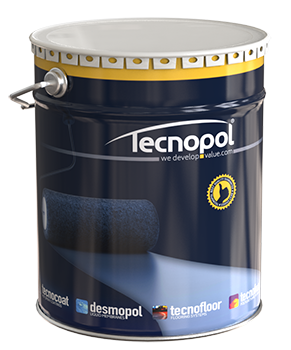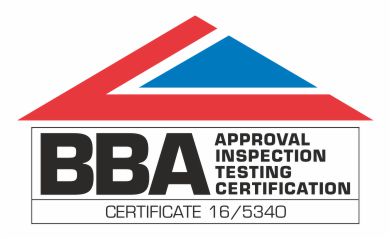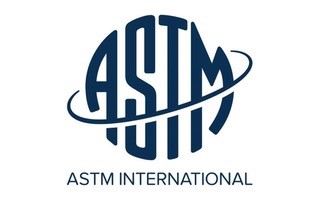GENERAL SPECIFICATIONS
- Single-component, moisture-cured, solvent-content liquid polyurethane that once applied, forms a continuous, seamless, highly elastic and wear-resistant, aromatic, waterproofing, and solid membrane.
- The system holds an ETA 10/0121, issued by EOTA (European Organization for Technical Assessment). under the EAD 030350-00-0402, specific approval for "Liquid Applied Roof Waterproofing based on polyurethane" working life 25 years ( W3), at 1.2 mm. membrane thickness (DFT), ponding water admitted.
- The system holds an ETA 21/0734, issued by EOTA (European Organization for Technical Assessment). under the EAD 030675-00-0107, specific approval for "Liquid Applied Bridge-deck Waterproofing based on polyurethane", at 1.2 mm.membrane thickness (DFT), ponding water admitted.
- The system holds a BBA certification n 16/5340 (validation on UK market and influenced) for "Waterproofing of walkable roofs" at 1.2 mm thickness (DFT), ponding water admitted.
- The system holds a green roof application certified, root resistance,according to the EN 13948 (ETA 10/0121 and BBA 16/5340)
- It has CE marking on the basis of a statement made DoP Declaration of Performance (DoP) conforms to the regulations UE305/2011.
- The traditional application is done by applying successive coats with a maximum thickness of 0.7 mm each (1.2 kg/sqm). Dry time between coats approximately 4-6 hours.
- Desmopol, polyurethane liquid membrane can be applied in only a single layer (minimum total thickness recommended 1.5 mm) by mixing with Desmoplus or Desmoplus 700, this fact upgrades their physical performances, increases the execution speed, and thus reduces the direct costs of the application, forms a solid membrane without bubbles inside. Do not use airless equipment when you apply with Desmothix or Desmoplus/Desmoplus 700.
- When it is used on low and steep slope roofs it requires Desmothix additive for slopes of more than 1.5% of a gradient. Mix Desmothix, maximum ratio 1liter for each 25 kg of Desmopol. You could apply on thin several coats.
- Surface reinforcement is not necessary, only in singular points of encounter with other construction elements or in certain situations depending on the conditions of the substrate or substrates with movements, not stable, disintegrated or with sharp joints (see "Application Typologies")
- Due to its resistance, it can be walked on and it will accept a rough finish to make it non-slip. (using Silica Sand or Tecnoplastic range aggregates)
- A ceramic floor can be placed on top. In this case, we recommend applying a thin coat of Primer PU-1030 or Primer PU-1050, consumption of around 50 to 60 g/sqm, and spreading Silica Sand on top, consumption of around 700-1,000 g/sqm, to improve mechanical anchorage.
- Joints and any type of union are saved since the finish is uniform and in one piece, providing a surface with optimal maintenance and cleaning.
- His properties allow it to adhere to any surface such as concrete, ceramic tiles, metals, spray polyurethane foam (Tecnofoam), plywood(OSB), asphalt/bituminous sheets. In any case or material, the surface must be consistent, firm, clean, and dry when the products are applied. Recommended applying directly on the concrete deck.
- It should be applied in dry conditions avoiding the presence of humidity or coming from the surface to be coated or the substrate, whether at the time of application or subsequently (pressure from phreatic water level). In the event there is humidity in the substrate at the time of application.
- The system requires solar radiation protection (UV rays) to do not lose its physical and mechanical properties, given that it is an aromatic membrane. Therefore, our EOTA (European Organization for Technical Assessment) approved systems (ETA 10/0121, BBA 16/5340), incorporates a protective polyurethane colored aliphatic resin, Tecnotop 2C, for use in the absence of other physical protection elements. You can apply too Tecnotop S-3000, Tecnotop 2CP or Tecnotop 1C.
YIELD
The recommended minimum thickness is up to 1.5 mm, so the yield will be up to 2.4 kg/sqm (DFT) applied on ONE (maximum thickness per coat 0.7 mm./ 1.2 kg/sqm) or various coats , depending on the application method and application conditions.
PACKAGING
Metal tins in three different formats: 6 kg / 15 kg / 25 kg.
STORAGE AND SHELF LIFE
12-months shelf life is stored in original containers in a dry environment at a temperature between 5-35 ºC (41-95°F). Keep away from direct sunlight, extreme heat, cold or moisture. Once the tin has been opened, the product must be used.
APPLICATION TYPOLOGIES
Application by coats (traditional or classical application ): Open the Desmopol metal tin and stir it up to homogenize using a mixing with medium-speed mechanical mechanical equipment. Extends the first layer using a short nap roller, a maximum thickness of 0.7 mm. ( 1 kg/sqm). Applying the material without dilution. Wait for complete drying (depend on the weather conditions), about 5~6 hours. Then, apply the next layer, in the same way as above. Repeat this process as many times as necessary to achieve the desired or recommended thickness. If it is necessary to add Desmothix due to the slope of the roof, you can add a some quantity, recommended 0.300 l per 25 kg Desmopol pail.
Reinforced system with Tecnomesh 100: To be used in ceramic substrates, torch and felt, bitumen membranes in general, in cracked substrates, or that have contraction or dilation movements. Open the metal tin and stir it up using a mixing with medium-speed mechanical mechanical equipment. Extended the first layer using a short nap roller, a maximum thickness of 0.7 mm. ( 1.2 kg/sqm). Applying the material without dilution. Extent Tecnimesh 100 on the wet resin, and push using a dry roll. Apply Desmopol on the still-wet previous coat. NOTE: In this case, consumption can increase from the application without mesh.
Single coat application (mixing Desmoplus or Desmoplus700): Open the metal tin and stir it up using a mixing with medium-speed mechanical mechanical equipment Pour Desmoplus or Desmoplus 700 inside the Desmopol metal tin, always in the fixed ratio supplied by the manufacturer. Continuous mixing with medium-speed mechanical equipment. Pouring of the material formed directly on the substrate, and spread using Use of trowel, squeegee or rubber lip (a short nap roll can also be used). This process is unique, whereby the desired thickness is obtained in one operation, eliminating intermediate waiting times, ensuring the formation of the membrane without internal bubbles, getting more tensile strength, and reducing the global drying time. The use of a mechanical equipment ("airless").
Mechanical application ("airless" equipment): Open the Desmopol metal tin and stir it up to homogenize using a mixing with medium-speed mechanical mechanical equipment. Add 5~10% solvent Desmosolvent into Desmopol metal tin. Mix the drum with medium-speed mechanical equipment. Apply thin layers using specific equipment. Wait for total drying. Repeat this process until the desired or recommended thickness. NOTE: do not mix the use Desmoplus or Desmoplus 700 when use a mechanical equipment ("airless")
NOTE: For other types of substrates, weather conditions or final use, consult our technical department.
APPLICATION METHOD
Cement or concrete substrates: Concrete should be completely cured (concrete curing takes 28 days) or, in any case, the maximum level of humidity allowed for the substrate should be verified, depending on the primer used. Concrete must be strong, cohesive and dry, having a correct planimetry, high surface resistance, eliminating laitance, graise, oils or release agents, without excessive irregularities. Therefore, the previous action of sanding, polishing, milling or shot-blasting will be assessed by the applicator to achieve a preparation of the substrate according to ICRI Guide 03732, CSP values 3 to 5. Existing holes or areas with a lack of material must be repaired using some of our epoxy resins: Primer EP-1020/Primer EP-1010. Mastic PU must be used on fissures or small cracks on the surface. In joints (width < 15 mm): remove old material, clean and fill with Mastic PU. In joints (width >15 mm): remove old material, clean and fill with Mastic PU. Complement with a Tecnoband 100 band on the upper part. In structural/expansion joints: remove old material, clean and fill with Mastic PU. Complement with specific elastic bands and Tecnoband 100. General cleaning of the substrate. PRIMING: use Primer PU-1050/Primer PUc-1050, Primer EP-1020, Primer EP-1010 or Primer WET, depending on the existing moisture in the substrate. Recommended Desmopol aplication: Single coat application (mixing Desmoplus or Desmoplus 700) or Application by coats. Aliphatic polyurethane as an aliphatic topcoat: Tecnotop 1C/2C/2CP.
Metal substrate: Metal surfaces should be prepared using sand-blasting to improve the surface's mechanical fixation properties. In many cases, the application of corrosion inhibiting products will be required. check the seals and overlaps and where necessary seal with Mastic PU and use Tecnomesh 100 to reinforce. For a quick and efficient cleaning up of the surface using a ketone-based solvent. PRIMING: use Primer EP-1040, total yield 100-150 g/sqm, or Primer EPw-1070, total yield 150-200 g/sqm. Recommended Desmopol aplication: Mechanical application, "airless" equipment. Aliphatic polyurethane as an aliphatic topcoat: Tecnotop 1C/2C/2CP.
Ceramic substrates :Ceramic surfaces should not have empty joints or loose elements or parts. These should be filled with Mastic P-2049 mastic or mortar, according to their size. Existing joints or seals: remove the old material, clean up and fill with Mastic P-2049. Sanding with specific equipment. Thereby, to remove moss or solids particles bonded to the substrate, and opening the pore. Clean up, using a vacuum method. PRIMING: use Primer EP-1040, Primer EP-1010 or Primer EPw-1070, depending on the existing moisture in the substrate. Recommended Desmopol aplication: Reinforced system with Tecnomesh 100. Aliphatic polyurethane as an aliphatic topcoat: Tecnotop 1C/2C/2CP.
Bitumen Membranes: Existing joints or seals: remove the old material, clean up and fill with Mastic PU and reinforced using Tecnomesh 100. Light sandblasting of the surface, to remove chips and dirt. Clean up well and eliminate all contaminants from the elements, such as dust or chippings, using dry methods preferably. PRIMING: use Primer EPw-1070, total yield 150-200 g/sqm. Recommended Desmopol aplication: Reinforced system with Tecnomesh 100. Aliphatic polyurethane as an aliphatic topcoat: Tecnotop 1C/2C/2CP.
NOTE: For other types of substrates, weather conditions or the substrate to be applied, consult our technical department.
REPAIR AND OVERLAPS PROCESSES
REPAIR: In cases where the membrane repair by accidental causes, or assembly procedures not covered installations, shall be as follows: Cut, removal of the affected area and/or damaged surface. Sanding this area extending about 20~30 cm. around the perimeter, for overlapping security. Cleaning (vacuuming) of waste generated (powder, dust...); if it's possible don't use water, and if used, support humidity value; ketones applicability based solvents for reducing this type of surface cleaning. Apply a thin layer (100-150 g/sqm) of polyurethane resin Primer PU-1030, Primer PU-1050, Prim er PU-1000. Light spread Silica Sand over the wet primer applied before. Wait for the total drying. apply Desmopol adding Desmoplus or Desmoplus 700. Application of the aliphatic polyurethane resin for protection against UV rays Tecnotop 2C/2CP/1C.
OVERLAPS: In cases has been exceeded recoat time (24~48 hours), so the waiting time between jobs is prolonged, proceed as follows: Sanding strip longitudinal overlap of about 20~30 cm. wide. Cleaning (vacuuming) of waste generated (powder, dust...)or existing dust; if it's possible, do not use water, and if it's used, check the support humidity value; ketones applicability based solvents for conducting this type of surface cleaning. Apply a thin layer (100-150 g/sqm) of polyurethane resin Primer PU-1030, Primer PU-1050, Prim er PU-1000. Light spread Silica Sand over the wet primer applied before. Wait for the total drying. apply Desmopol adding Desmoplus or Desmoplus 700. Application of the aliphatic polyurethane resin for protection against UV rays Tecnotop 2C/2CP/1C.
HEALTH AND SAFETY
Respiratory Protection: When handling or spraying use an air-purifying respirator. Skin protection: Use rubber gloves, remove immediately after contamination. Wear clean body-covering. Wash thoroughly with soap and water after work and before eating, drinking, or smoking. Eye / Face: Wear safety goggles to prevent splashing and exposure to particles in the air. Waste: Waste generation should be avoided or minimized. Incinerate under controlled conditions in accordance with local laws and national regulations. Re-occupancy of the work site without respiratory equipment is minimum 24 hours providing the correct ventilation for the area sprayed. Contractors and applicators must comply with all applicable and appropriate guidelines for storage and safety guidelines.These safety recommendations for handling, are necessary for the implementation process as well as in the pre and post, on exposure to the loading machinery. Dispose waste in accordance with star or/and local regulations.
TECHNICAL AND CHEMICAL PROPERTIES
|
PROPERTIES
|
VALUES
|
|
Density ISO 1675
|
1.40 ±5 g/cm³
|
|
Viscosity ISO 2555
|
2,500 ~ 6,000 cps
|
|
Dry extract at 105 ºC % weight EN1768
|
85± 5 g/cm³
|
| Ashes at 450 ºC % weight |
42~47% |
| Initial dry time (without Desmoplus / with Desmoplus / with Desmoplus 700) |
5~6 hours / ±1.5 hours / ±3 hours |
| Recoat time (without Desmoplus / with Desmoplus / with Desmoplus 700) |
5~48 hours / 1.5~24 hours / 3~24 hours |
| Application temperature range (substrate and environment) |
3~35 ºC (37 to 95ºF ) |
| Use temperature range (environment) |
-20~80 ºC (-4 to 176ºF ) |
| Solid content ISO 1768 |
80 ~ 90% |
| VOC content (volatile organic compounds) |
210 ~270 g/l |
| Tensile strength (without Desmoplus / with Desmoplus / with Desmoplus 700) ISO 527-3 |
2~3 MPa / 4~6 MPa / 4~6 MPa |
| Elongation at break (without Desmoplus / with Desmoplus / with Desmoplus 700) ISO 527-3 |
400~600% / 400~600% / 400~600% |
| Hardness Shore A/D DIN 53.505 |
>85 / >35 |
| Tear Strength, (longitudinal)trouser, angle, and crescent test pieces ISO 34-1:2011 |
±24 KN/m |
| Adherence to concrete/Steel/Polyurethane |
1.9MPa / 1.6MPa / 0.2MPa |
|
Maximum environment humidity
|
80%
|
Results performed in the laboratory at 23ºC (73ºF) and 50% RH, under controllable conditions. These values may vary depending on the application, climatology, or substrate conditions.
TECHNICAL AND CHEMICAL PROPERTIES (ACCORDING TO ETA 10/0121 AND BBA 16/5340, SYSTEM PROPERTIES)
|
PROPERTIES
|
VALUES
|
| Working-life (according to the EOTA and BBA) |
W3 25 years (1.2 mm minimum thickness) |
| External fire performance EN 13501 |
Broof classification (t1)+ (t4) |
| Fire reaction EN 13501 |
Euroclass E |
| Climatic zone |
S (hard weather) |
| Water vapor resistance EN 1931 |
µ=2.455 |
| Water-vapor permeability EN 1931 |
14 g/sqm/day |
| Roof slope |
S1~S4, zero slope, ponding water admitted |
| Temperatures / User loads |
P4:TH2// P3:TH4, concrete / P1:TH2,PU (Spray polyurethane foam)
|
|
Anti roots certification EN 13948
|
PASS
|
Results performed in the laboratory at 23ºC (73ºF) and 50% RH, under controllable conditions. These values may vary depending on the application, climatology, or substrate conditions.
ASTM, membrane properties
|
PROPERTIES
|
VALUES
|
| Initial tensile strength ASTM D412 |
593 psi |
| Final tensile strength G-154 accelerating weathering 500 h |
582 psi |
| Initial tensile strength at 90 days/ 70ºC(158ºF) |
695 psi |
| Tensile strength initial modulus at 100%/200%/300% ASTM D638 |
567 psi / 262 psi / 180 psi |
| Initial elongation at break ASTM D412 |
507 % |
| Final elogation at breack G-154 accelerating weathering 500 h |
486 % |
| Final elogation at breack 90 days/70ºC(158ºF) |
391 % |
| Hardeness Shore A/D ASTM D2240:2015 |
86/33 |
| Water absorption (% mass) ASTM D-570 |
2.7 % |
| Permeance ASTM E96 |
1.7 perms |
| Puncture resistance ASTM D4833 |
37 lbf |
| Abrasion resistance (H18 wheel, wear index / H22 wheel, wear index) ASTM D4060 |
2,477 mg / 1,719 mg |
| Crack-Bridging ASTM C1305 |
no cracks after 10 cycles at -26ºC(-15ºF) |
| Pull off strength on steel / concrete ASTM D4251 |
514 psi / 502 psi |
Results performed in the laboratory according to conditions specified in the issued documents.

















